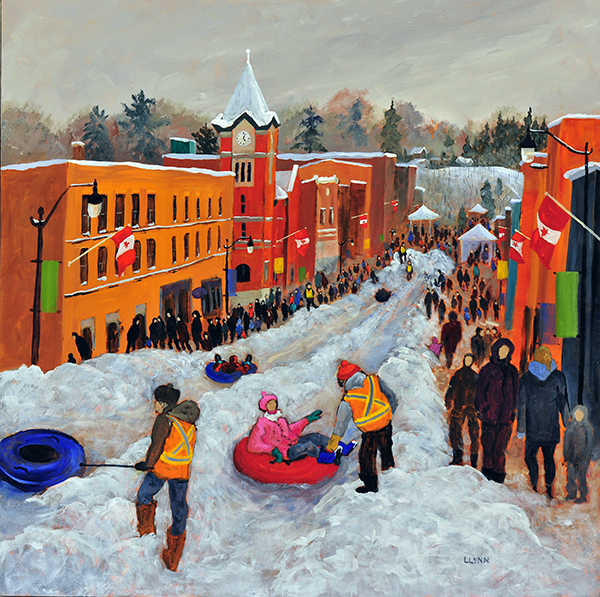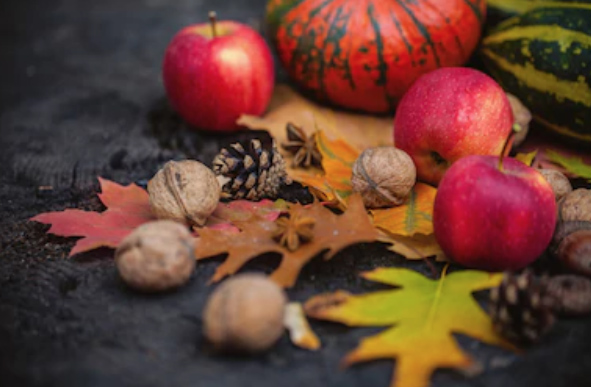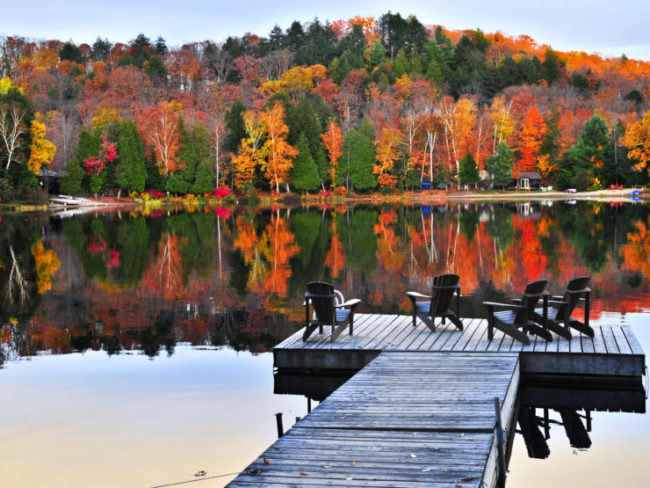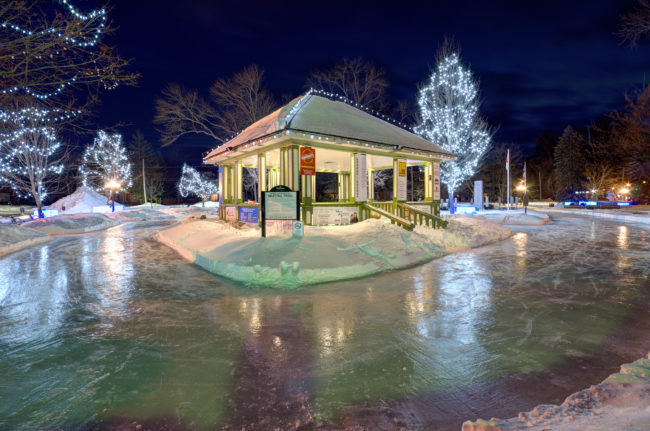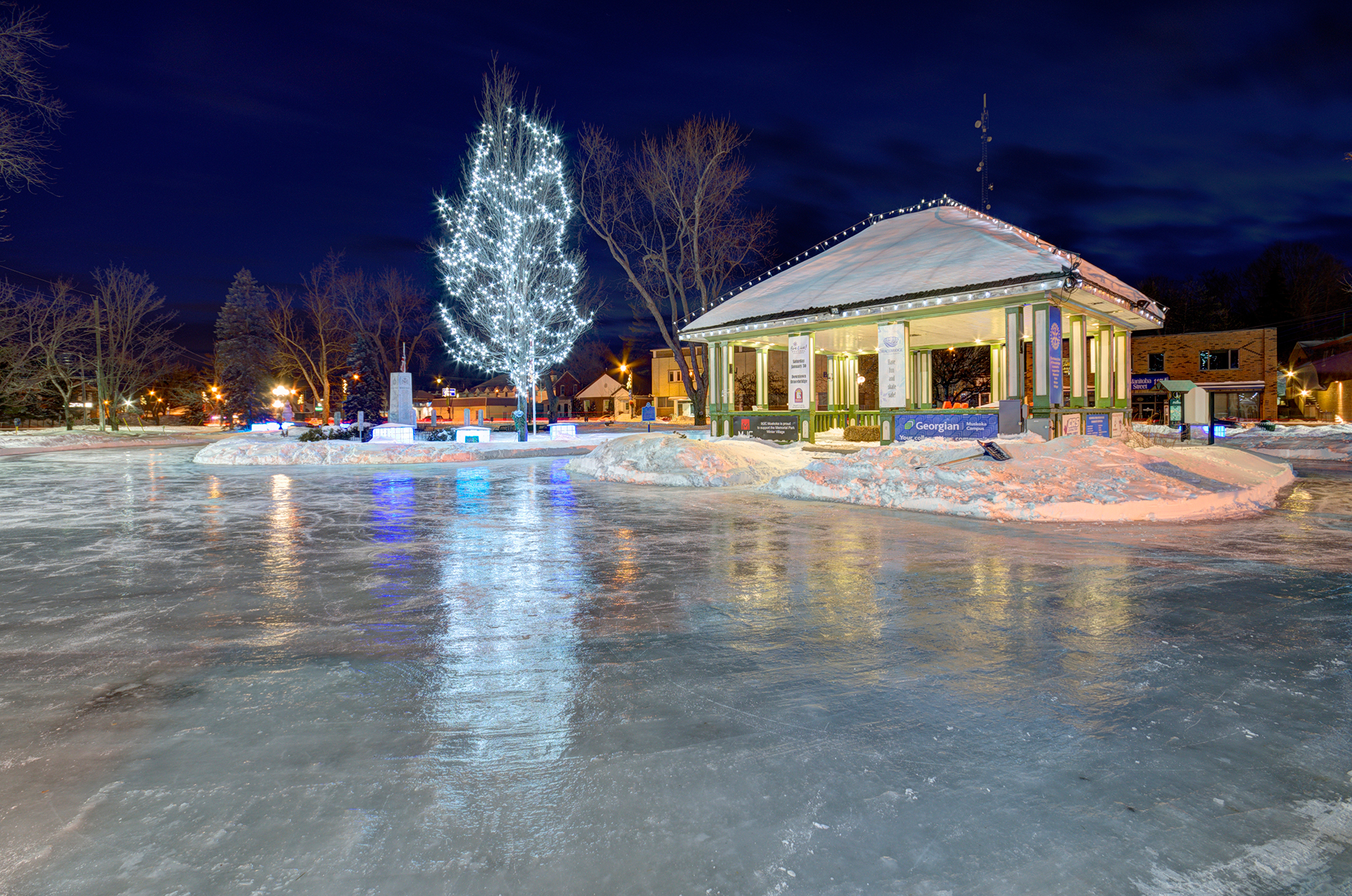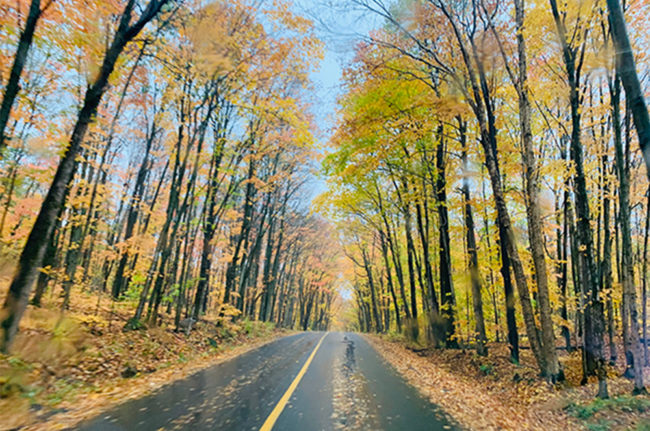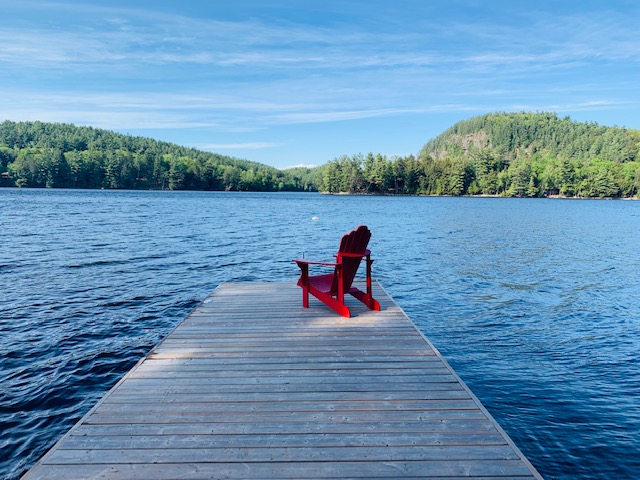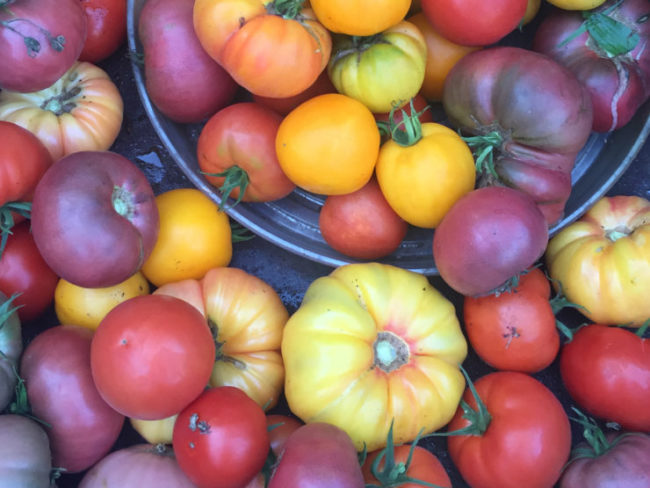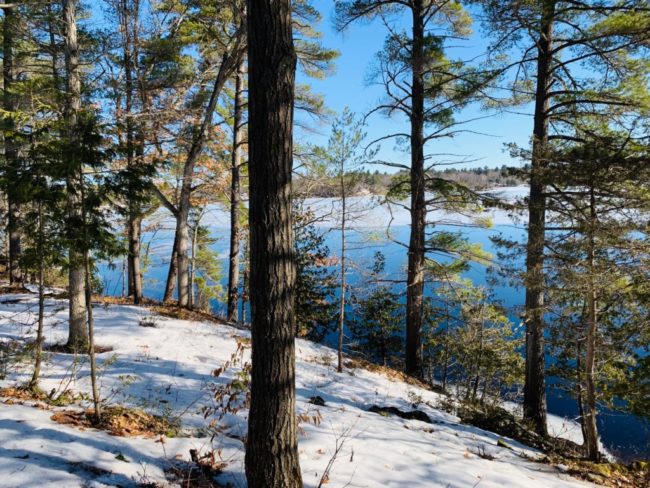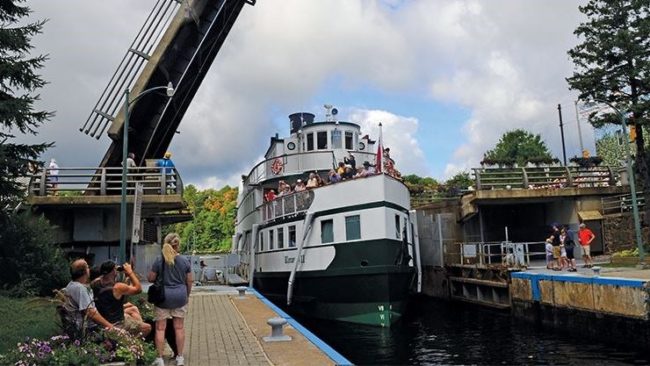The Women of Winter
Winter has always been a favourite of mine, especially in Muskoka. Snow has a special way of lighting cottage country landscapes by blanketing the evergreens, sparkling the fields, and rendering frozen lakes in smooth, contemplative whites. I’ve been admiring the way Muskoka’s women artists are able to capture this beauty on canvas. Painter Lynda Lynn, for example, a colleague of mine in real estate, is especially talented in catching the feel and colour of a Muskoka winter. Joining her are fellow mixed media artists Wendie Donabie and Janice Feist. This month I’m profiling their winter works. Join me in celebrating these remarkable women.
Lynda Lynn
Perhaps the most recognizable painting by Lynda Lynn is a depiction of downtown Bracebridge during the annual festival titled Fire and Ice. Lynn uses soft watercolours, oils and acrylics in her representationals to put you right there in the scene. In the Fire and Ice painting, you’re walking the store-lined hill on Manitoba Street alongside the artist, sensing the cold and the wind, but also the joy of children as they slide on snow. A profile of the artist in Unique Muskoka explained it this way: “Using this style captures the overall picture but allows the artist to manipulate specific parts to create a more balanced composition for the art piece.” Lynn is a fifth generation Muskokan, her family first arriving to homestead in the 1800s. The place is in her soul. “I love the feel of the soft breezes on my face,” she explains, “the rainbows in the dewdrops, the smell of the land after a summer rain, (and the) softly falling snowflakes as big as feathers.” You can view more of Lynda Lynn’s work at www.muskokaartist-lyndalynn.com
Wendie Donabie
Paintings by Wendie Donabie start with a walk and a camera. Alongside her husband Hugh Nichols, a commercial realtor, Donabie hikes the trails of Muskoka in both winter and summer, seeking what she calls her next muse. “When I witness a scene that causes my heart to flutter and goose pimples to rise on my skin,” she says, “I’m moved to capture the moment with a photo.” Back in her Bracebridge studio, a light sketch comes next, then the painting begins. “I know a painting is finished,” she says, “when I experience the same emotional response that inspired its creation.” In her Heron’s Nest Gallery (95 Muskoka Road), Donabie exhibits a range of her work, from realistic to abstract and impressionistic. Many feature creatures of Muskoka’s streams and woodlands—birds, deer, fish—and many are mystical. Among my favourites: Winter Solstice, an acrylic that captures the sun as it lights a snowy trail in the heart of a Muskoka forest. Wendie Donabie’s work can be seen at www.wendiedonabie.com
Janice Feist
Being surrounded by the lush landscape of Muskoka is Janice Feist’s “idea of heaven”. Living and working here for more than 30 years, the painter and sculptor is inspired by the beauty and ruggedness of the Canadian Shield. “It’s a magical place,” she says, “an artist’s treasure.” Feist has always been drawn to colour and texture. Her paintings capture what it’s like to view a stormy sky in winter, or encounter a wolf or a bear as he roams the leafless woodlands. In sculpture, Feist holds a place in her heart for horses. Hand-built in papier mache, these silent beauties are stoic and majestic, some with snow blanketing their backs and faces. To view Janice Feist’s work, see www.janicefeist.com


